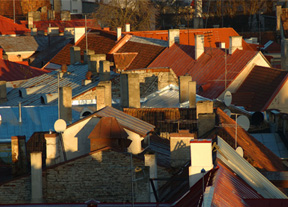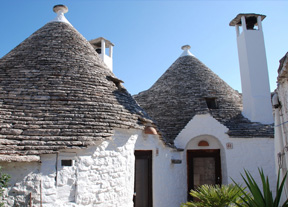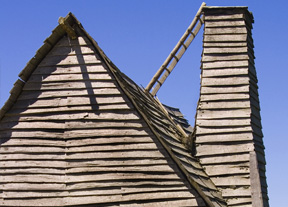Do Fireplaces Really Heat?
 We’ve all heard it before: “Fireplaces don’t really make a house warmer. They suck out the heat and send it up the chimney.” And yet, before central heating, millions of homes worldwide were heated by nothing but wood burning fireplaces – including the White House with its 28 fireplaces. From caves to castles, man has long heated his living spaces with hearth fires. They’re used for warmth in coldest Siberia. So how did we come to believe that millions of fireplaces are wasters of energy – losing more heat than they supply? Why the change of hearth?
We’ve all heard it before: “Fireplaces don’t really make a house warmer. They suck out the heat and send it up the chimney.” And yet, before central heating, millions of homes worldwide were heated by nothing but wood burning fireplaces – including the White House with its 28 fireplaces. From caves to castles, man has long heated his living spaces with hearth fires. They’re used for warmth in coldest Siberia. So how did we come to believe that millions of fireplaces are wasters of energy – losing more heat than they supply? Why the change of hearth?
Dr. Cranberg addressed the anti-fireplace fallacy:
 “Ever since early man learned 1.4 million years ago to domesticate the wild fire, an open fire on a domestic hearth has been a source of thermal comfort that has enabled human civilization to spread to every climate zone. This fact is so well known that to challenge it seems the height of absurdity. Yet starting in the mid-1970’s, that concept has been challenged so widely, that today a large proportion of Americans firmly believe it is not true that a domestic fire can heat an interior space in cold weather, but rather that it draws in so much cold air from outside as to outweigh its heat benefits.”
“Ever since early man learned 1.4 million years ago to domesticate the wild fire, an open fire on a domestic hearth has been a source of thermal comfort that has enabled human civilization to spread to every climate zone. This fact is so well known that to challenge it seems the height of absurdity. Yet starting in the mid-1970’s, that concept has been challenged so widely, that today a large proportion of Americans firmly believe it is not true that a domestic fire can heat an interior space in cold weather, but rather that it draws in so much cold air from outside as to outweigh its heat benefits.”
 How did the fireplace suddenly get such a bad rap? Financial motives may have played a role. The re-birth of wood stoves in the 1970’s coincided with a widespread campaign of misinformation about the fireplace. As a result, what once seemed the height of absurdity was now accepted as gospel by millions of Americans – that the hearth fire, used for heat around the world for millennia – wasn’t creating heat after all. (Apparently, nobody asked the Inuit about this.)
How did the fireplace suddenly get such a bad rap? Financial motives may have played a role. The re-birth of wood stoves in the 1970’s coincided with a widespread campaign of misinformation about the fireplace. As a result, what once seemed the height of absurdity was now accepted as gospel by millions of Americans – that the hearth fire, used for heat around the world for millennia – wasn’t creating heat after all. (Apparently, nobody asked the Inuit about this.)
 As the cost of heating soared, billions of dollars worth of wood stoves and fireplace inserts and other fireplace products were marketed to replace or alter fireplaces, accompanied by claims of the fireplace’s inefficiency. As a result, many Americans became convinced that their fireplaces were nothing more than decorative losers ofheat. In reality, fireplaces are one of the smartest ways a homeowner can reduce the heating bill, using a renewable source of energy: wood, and a simple device to hold that wood – the Texas Fireframe® grate. For evidence of this, read through some of our Customers’ Grate Reviews.
As the cost of heating soared, billions of dollars worth of wood stoves and fireplace inserts and other fireplace products were marketed to replace or alter fireplaces, accompanied by claims of the fireplace’s inefficiency. As a result, many Americans became convinced that their fireplaces were nothing more than decorative losers ofheat. In reality, fireplaces are one of the smartest ways a homeowner can reduce the heating bill, using a renewable source of energy: wood, and a simple device to hold that wood – the Texas Fireframe® grate. For evidence of this, read through some of our Customers’ Grate Reviews.
 Also fueling the fallacy is the “thermostat-clicked-off” phenomenon. Ahot, efficient fire like “the Physicist’s Fire,” will cause a thermostat to click off if it’s located near the fireplace. Other rooms in the same zone will become cooler as a result, causing people to deduce that the heat has been “sucked out” of these rooms when in fact, the central heat was merely turned off by the heat of the fire.
Also fueling the fallacy is the “thermostat-clicked-off” phenomenon. Ahot, efficient fire like “the Physicist’s Fire,” will cause a thermostat to click off if it’s located near the fireplace. Other rooms in the same zone will become cooler as a result, causing people to deduce that the heat has been “sucked out” of these rooms when in fact, the central heat was merely turned off by the heat of the fire.
There’s another factor to consider besides air temperature, and that is the effect of a fire’s radiant heat on the skin. The energy balance of the house is not as important as the thermal comfort of the house’s occupants. Dr. Cranberg uses the fan analogy to illustrate this point:
 “If we judge the usefulness of a fan based on the same kind of energy-balance considerations which have been applied to the fireplace, we discover the cooling fan is a heating device! For surely all the energy which goes into rotating the fan heats the air in the house, albeit slightly. But as everyone knows, there is a cooling effect due to increased evaporation of moisture from the skin when a current of air is moved over the skin. Thus, to understand the usefulness of a fan, one must focus not on the energy balance of the house but on the energy balance of the human skin. To understand the usefulness of a fireplace or other local source of radiant energy, one must focus attention on the energy balance of the skin of someone within range of the radiant energy of that local heat source. For radiant energy heats the skin directly, just as evaporation cools it.
“If we judge the usefulness of a fan based on the same kind of energy-balance considerations which have been applied to the fireplace, we discover the cooling fan is a heating device! For surely all the energy which goes into rotating the fan heats the air in the house, albeit slightly. But as everyone knows, there is a cooling effect due to increased evaporation of moisture from the skin when a current of air is moved over the skin. Thus, to understand the usefulness of a fan, one must focus not on the energy balance of the house but on the energy balance of the human skin. To understand the usefulness of a fireplace or other local source of radiant energy, one must focus attention on the energy balance of the skin of someone within range of the radiant energy of that local heat source. For radiant energy heats the skin directly, just as evaporation cools it.
 It has long been obvious that by investing a few watts in driving a fan one is able to save hundreds of watts in one’s central air-conditioning system in summer. Now in winter, in an exactly analogous manner, a few dollars spent on fuel for a local heat source such as a fireplace can save many dollars on the fuel required to heat the entire house with central heating. …With a comfortable fire in the main living space of the house, one can effect substantial economies in the heat required to warm a house in winter.”
It has long been obvious that by investing a few watts in driving a fan one is able to save hundreds of watts in one’s central air-conditioning system in summer. Now in winter, in an exactly analogous manner, a few dollars spent on fuel for a local heat source such as a fireplace can save many dollars on the fuel required to heat the entire house with central heating. …With a comfortable fire in the main living space of the house, one can effect substantial economies in the heat required to warm a house in winter.”
Despite myths and misconceptions about the fireplace, there has been a rekindling of  interest in the classic hearth fire – and in the savings it can bring to the homeowner. The Texas Fireframe grate will be keeping the home fires burning long after the anti-fireplace fallacy has burned out. Delivering an estimated 5 kw of radiant power, this grate significantly improves efficiency of biomass compared to the conventional fireplace grate (which means you’re getting more heat from each log burned.) Judging by our fan mail and praise in the press, the humble fireplace is finally getting the recognition it deserves.
interest in the classic hearth fire – and in the savings it can bring to the homeowner. The Texas Fireframe grate will be keeping the home fires burning long after the anti-fireplace fallacy has burned out. Delivering an estimated 5 kw of radiant power, this grate significantly improves efficiency of biomass compared to the conventional fireplace grate (which means you’re getting more heat from each log burned.) Judging by our fan mail and praise in the press, the humble fireplace is finally getting the recognition it deserves.
Our fire grates are available in three sizes.
Home | The Texas Fireframe Story | Best Fireplace Grate Press Reviews | Fireplace Grate Customer Reviews | Do Fireplaces Really Heat? |
Greener Than Gas Logs | About the Inventor | Contact Us | Fireplace Grate Store | Log On To A Smarter Fireplace Blog
© Copyright 2025 Texas FireFrame Co. All Rights Reserved.



